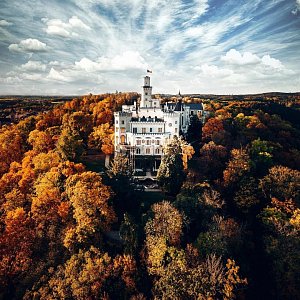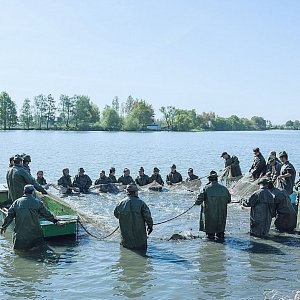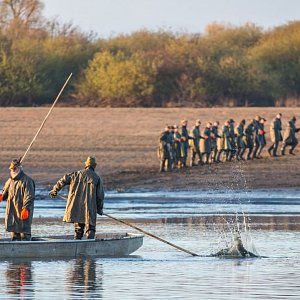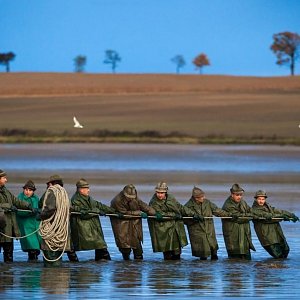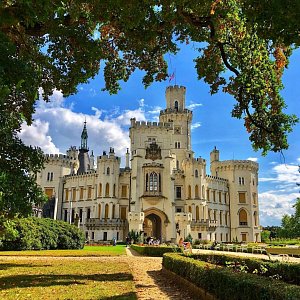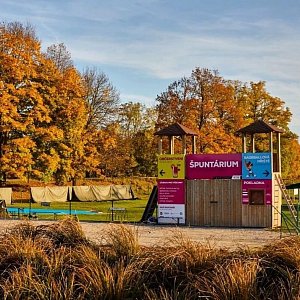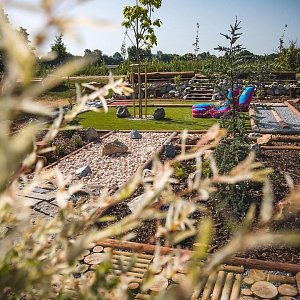In the sun and in the shade to Karlov hrádek



Movement and hiking in particular. Friends, today we have a unique tip for a day trip from Hluboká to Hluboká, where you can fit everything in: Movement, sport, water, beautiful nature, history, adrenaline, knowledge, ferry... And even that steak when you're hungry. All this on a few kilometers, leading around the Vltava River, often on flat terrain, but also through the charming terrain waves and forests of the Poněšická preserve, all for a few bucks. And you can choose a dry or wet option, i.e. whether a bicycle, electric bike or scooter, or a boat or paddleboard. We'll try a circuit along the left bank of the Vltava from Hluboká to Purkarka, take the ferry to the other side and back along the right bank to Hluboká.
If you choose the wet option and you are not the owner of a water approach boat, the rental in the sports and relaxation area above the Hluboká harbour will fully cover you. You can rent a vessel of your choice, but you can also rent a boat cruise, as the Vltava waterway has undergone a number of investments and construction works and is now experiencing a well-deserved tourist boom in the summer months.
The advantage of the wet route is that it's hard for a more astute pilot to get lost on the Vltava, and all the places we want to visit today have piers for trouble-free landing and mooring. Simply: We go together from pier to pier, upstream and downstream...
Therefore, let's now turn our attention to the description of the cycling route, which is only slightly more complicated.
We can start the water and cycle route from the Hamry dock by the bridge connecting Hluboká with Zámostí. A few metres from the dock, the Hamry car park is a foothold on the left bank. Here we get on the Vltava cycle path No. 7, which follows the left bank of the Vltava and is undulating along the whole route just enough to make you pant, but not sweat too much...
The first possible stop is Baba - a rocky lookout point at the site of two prehistoric settlements dating back about three and four thousand years ago. From the pier on the bank of the Vltava River and the information board at the roundhouse, a red tourist sign will take us uphill to the left. Even older children can manage the climb up to the rock terrace with a breathtaking view of the bends of the Vltava, but be careful...
The Vltava River, the cycle path and the red hiking trail continue from Baba northwards to the site of another prehistoric and medieval settlement - to the well-kept ruins of the Karlshaus, Hrádek u Purkarce, in short to Karlovy Vary. From the river and the cycle path, we have to climb up to the promontory above the Vltava, but it is worth it. The ruins of the castle, which was founded by the greatest of the Czechs, Emperor Charles IV, were saved from further devastation by the town of Hluboká and a group of enthusiasts from the surrounding area, united in the civic association, the Karlův hrádek Society. The first written mention of the castle in the middle of the deep Hluboka forests, which controlled the flow of the Vltava River as an important trade artery, dates back to 1357. However, current archaeological excavations led by Professor Rudolf Krajíc from the Institute of Archaeology at the University of South Bohemia have uncovered pottery, ironwork, bones and charred wood remains from at least a century earlier and even older than the archaeological team expected.
Since 2018, when the Hluboka Town Hall and teams of experts systematically started to save the castle, it has become an original textbook and classroom for archaeologists, students of archaeology, researchers from GEO.CZ, who deal with modern imaging methods such as photogrammetry, depth geodesy and laser scanning, and a meeting place for lay history lovers. In stages, research is carried out on individual parts of the castle, the results of which can be viewed on information boards and in the form of QR codes. And they are extremely interesting and even surprising. They show, for example, that Charles Castle was not built on the green, but in a place where an older settlement undoubtedly existed, perhaps since prehistoric times. And that the founder Charles IV had big plans for it and the nearby Purkarec. Apparently, here, at the ford over the Vltava River, at the crossroads of important trade routes, he wanted to build a fortified town against the power of the neighbouring Vítkovs and the seat of the purgatory. Thanks to archaeological research, the reason for the castle's demise sometime after 1370 has probably been clarified, which was probably a violent fire in the residential part of the castle, the location of which is still visible on the castle walls to the eyes of the attentive visitor. Much more information about this amazing place can be found, for example, at www.karluvhradek.cz
Another beautiful place we will reach on our route is Purkarec, two kilometres away, famous for the tradition of the local tribe of vorares, who floated wood from the Sumava forests to the mother city of Prague. According to archaeologists, the size and method of foundation of the local church of St. George, controlling the former ford over the wide-spreading Vltava River, suggests that it was built with the intention that it would one day be surrounded by a large town and castle with the Purkabrate office. However, Emperor Charles IV died in 1378 and his intention was no longer fulfilled. Nevertheless, in Purkarc, where the Vltava has multiplied its width thanks to the rise of the Hněvkovice dam, we can visit the museum of voyaging run by the Vltavan association, enjoy the comfort of the Vltava wharf, replenish our calories and, head here, take advantage of the ferry to the right bank of the Vltava. Even with a bicycle or an electric bicycle, we can get to the other side in the season from May 1 to the end of October for a few tenner and it is not only an experience for children.
After the right bank, we have a return trip upstream. From the ferry, we will climb through the meadows to Kostelec and then right to Poněšice, where we will find a more varied route. We will approach Hluboká through the shadow of the giants of Poněšická obora, but there is still one more stop - the newly built ferrata C, which is accessible from the car park by the Poněšická road. Route C is 170 metres long and its difficulty B makes it suitable for families with children. From the ferrata it is only a short walk to Zámostí, which is the right bank part of Hluboká with the railway station on the railway line No. 220 České Budějovice - Tábor- Benešov - Prague.
